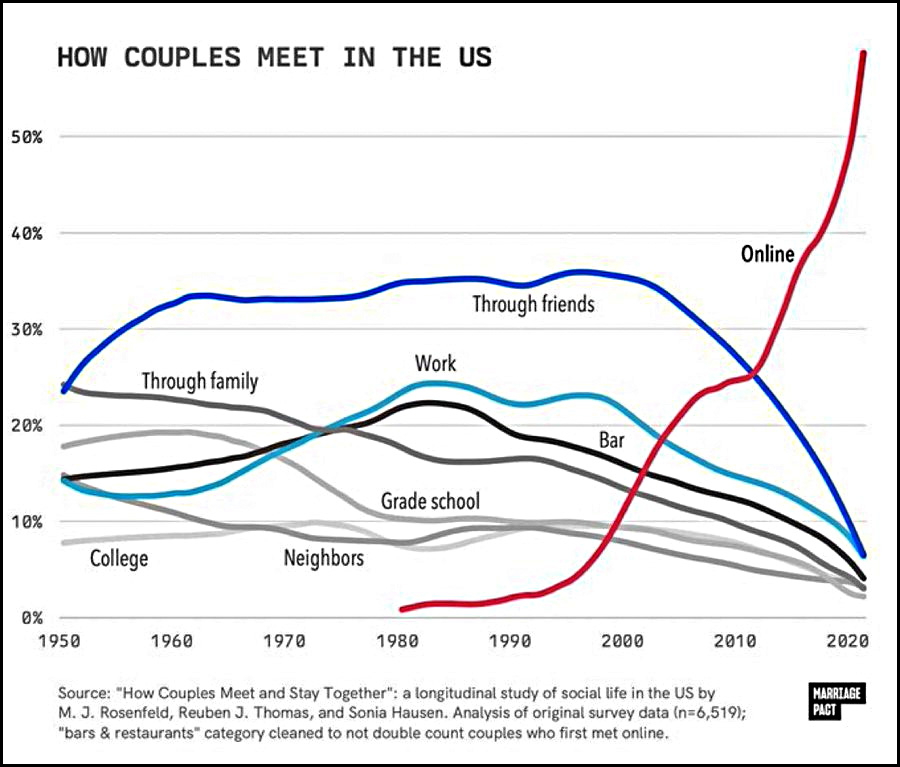Do I have any readers under 30? This chart made the rounds today and I'm confused:
 I don't know how accurate this is, but I've seen plenty of charts like it. Here's what I don't get.
I don't know how accurate this is, but I've seen plenty of charts like it. Here's what I don't get.
It makes sense that online introductions have gone up. But that much? People still go to college, they go to work, and they go to bars. They still have family, friends, and neighbors. But those modes of introduction have dropped to almost nothing. Why?
Is it because online dating is so hugely superior that no one is willing to risk any other method now? Have we gotten so woke that no one dares make an in-person advance these days? Are you just more likely to hit it off with someone you meet online compared to meeting IRL? Thoughts?
For the record, I wish the authors would distinguish between meeting someone at an online dating site and meeting someone during some other kind of online activity. These are very different things to casually lump together.








